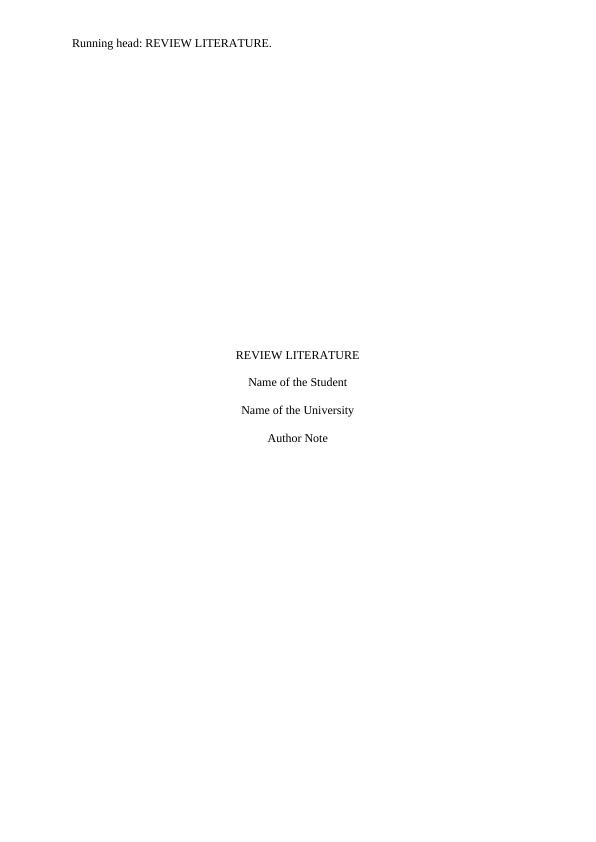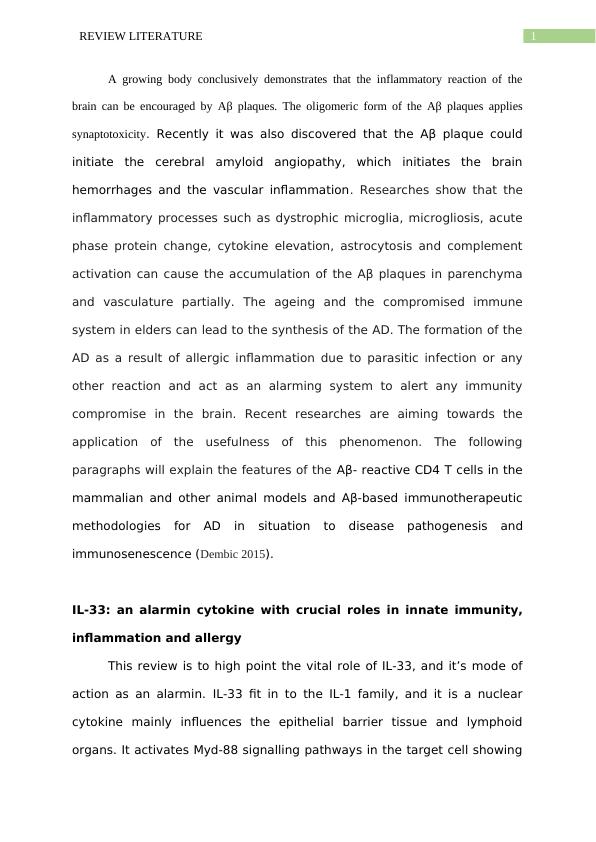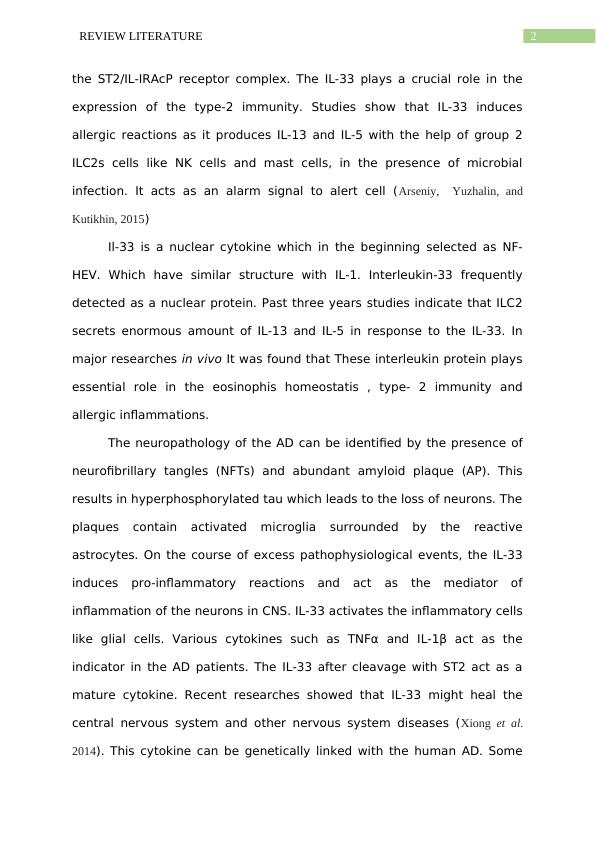Review Literature on Inflammatory Reaction of Brain and Role of IL-33, IL-16, and CD4
This review discusses the characteristics of Aβ‐reactive CD4 T cells in animal models and humans, and explores Aβ‐based immunotherapeutic approaches for Alzheimer's disease in the context of disease pathogenesis and immunosenescence.
8 Pages2015 Words241 Views
Added on 2023-06-09
About This Document
This review literature discusses the inflammatory reaction of the brain and the role of IL-33, IL-16, and CD4 in neurodegenerative diseases like Alzheimer's. It also highlights the mode of action of IL-33 and IL-16 as alarmin cytokines and the mechanical properties of CD4 cells.
Review Literature on Inflammatory Reaction of Brain and Role of IL-33, IL-16, and CD4
This review discusses the characteristics of Aβ‐reactive CD4 T cells in animal models and humans, and explores Aβ‐based immunotherapeutic approaches for Alzheimer's disease in the context of disease pathogenesis and immunosenescence.
Added on 2023-06-09
ShareRelated Documents
End of preview
Want to access all the pages? Upload your documents or become a member.



